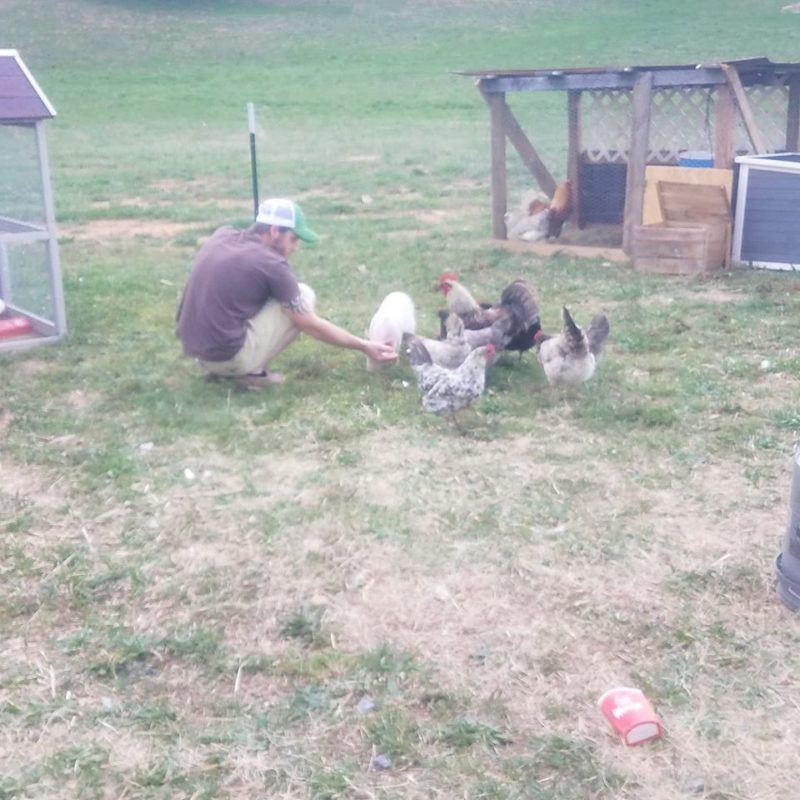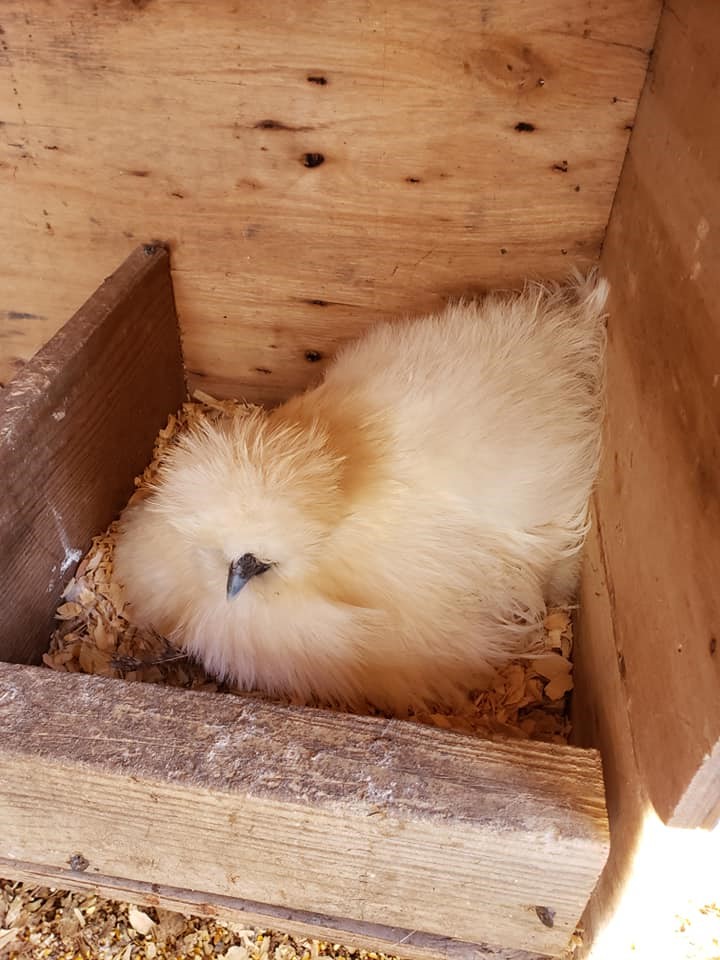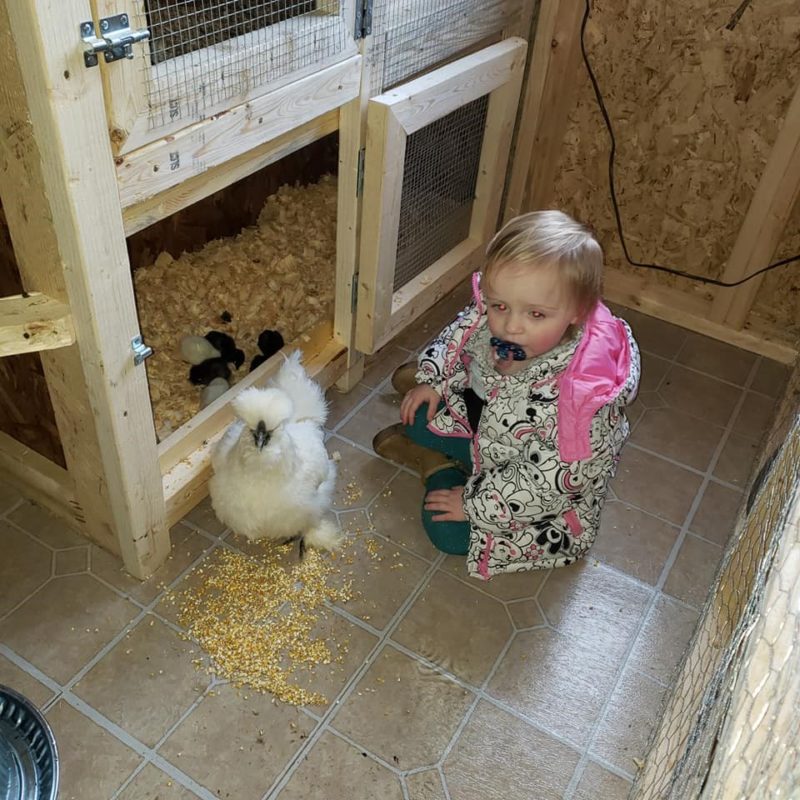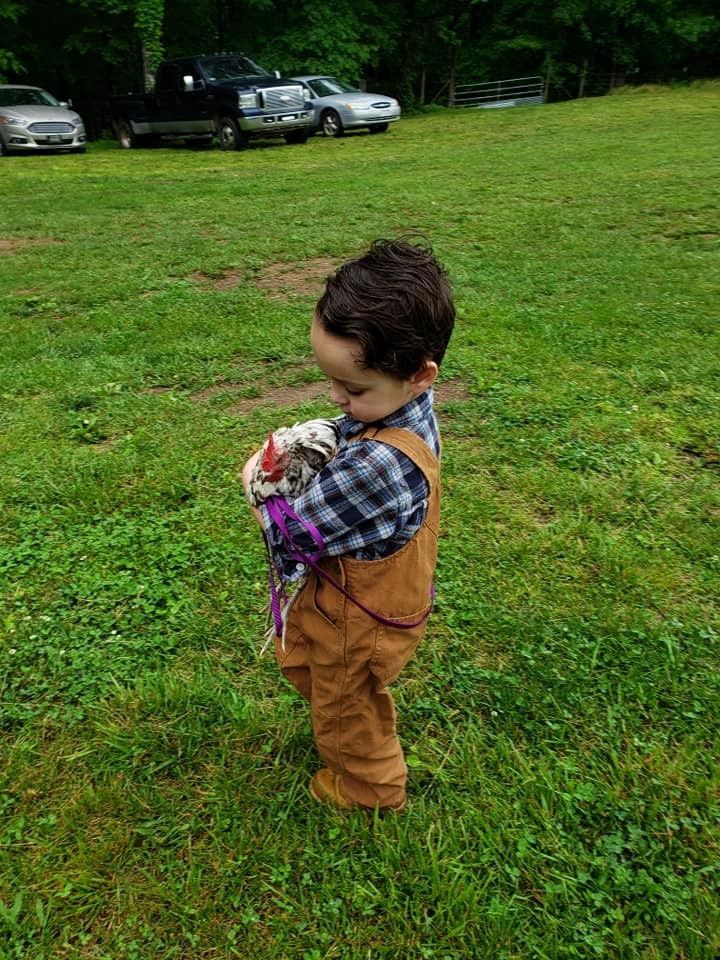Animal-Assisted Therapy has come into its own in the last decade or so. Marissa Buchanan helps us understand how to start an AAT program with chickens.
Response to the Cackle and Purr
In the human body, there are all sorts of hormones floating around. Some of these hormones cause stress, while others induce relaxation. Some of the hormones that make you stress are aldosterone, cortisol, and adrenaline. There are many that make you relax and be a happier person also. Just two of these are dopamine and oxytocin. Oxytocin is a major player in making people feel better. It is exactly the opposite from cortisol (the stress hormone) and makes you calm down. It also makes you bond easier socially and has a healing property. This is one reason why Animal-Assisted Therapy is so successful. When an animal is present, most people automatically relax. This is because those stress hormones immediately decrease when an animal is present, and after about half an hour, oxytocin is being released, making the therapy session a relaxing environment.
Basics of the Interactions
Animals don’t judge—at least, most animals don’t. Many people in very rough situations are more comfortable when there’s an animal involved with their therapy. They share more, can recall memories better, and, thanks to the oxytocin, they are calmer. This in turn opens up so many areas of care. For example; a veteran suffering depression because of a below-knee amputation cannot move around the same with a prosthetic limb. For their care plan, their doctor or physical therapist can prescribe Animal-Assisted Therapy to help. During therapy, the professional might have a dog present. The veteran can then play fetch with the dog while sitting down. This helps the veteran be active while focusing on throwing the ball for the dog. Not only can the patient improve physically, but working with the animal can be joyous and stimulate oxytocin.
Starting AAT with Chickens
People with autism, Asperger’s, and Down syndrome aren’t the only ones who can benefit from Animal-Assisted Therapy (AAT). AAT can also help people struggling with depression, PTSD, schizophrenia, and even addiction.
When most people hear about Animal-Assisted Therapy, they think of dogs, especially beautiful golden retrievers or cute, friendly beagles that exude cheer. But there are lots of animals that, with training, work well as assist animals, including chickens. Here are some of my experiences training animals and partnering with different organizations using chickens for AAT.
If you’re interested in opening your farm to these programs, there are some steps you’ll need to take to keep your visitors and animals as stress-free as possible. Depending on the facilities in your area, you may also be able to take your trained animals to children’s hospitals, nursing homes, and mental health facilities to help with their patients’ care. Please check your state and local laws regarding Animal-Assisted Therapy and partner with a local mental health professional who’s well versed in AAT before getting involved in AAT.

A good start to an AAT program is having docile breeds that are friendly. (All photos by author.)
Calm Chickens
Spend time with your chickens to see which ones are naturally calm, friendly, and have potential to be trained. You can start by teaching the bird to hop up on your knee to get a little treat.
Calm birds can help keep a person “grounded,” meaning that they hold the person’s attention well. Animals can also be used to practice social skills by having the patient pay attention to their behavior. For instance, if you see someone startle the bird, you can have a conversation about moving slowly, or speaking in a gentle voice. People will take social cues from animals and can learn to apply them to people interactions.
Working with the Professionals
If you decide to work with a mental health professional and some of their clients, they’ll have established specific goals and can work with you and your animals to use AAT strategically. Or perhaps you’d like working with a veteran’s hospital and patients who have mobility issues. Using AAT can help a patient get outside, and moving around with the animals can increase the patient’s endurance, strength, balance, and range of motion.
Just holding a chicken, stroking its soft feathers, and listening to it purr is quite the mood lifter and can also help with a patient’s self-esteem. It’s important to test all animals for temperament and social skills prior to having visitors.
Safety and Sanitation
Animal-Assisted Therapy is a lot more than just visiting with a chicken. Depending on the patient’s goals, established by the healthcare professional they’re working with, it can include caring for that animal also. This has been shown in many studies to decrease a patient’s high blood pressure and stress, and to tremendously improve their pain levels, depression, and self-confidence.
While there are many positives, there are also some negatives. Safety is a concern for the animal and the patient. When participating in AAT, ensure that you cover safety with the patient and how to handle the animal appropriately. Sanitation is also a concern. Cover hand washing with all clients, and carefully vet the animals you’ll be using to make sure they’re up to date on their shots.

Silkies are a great choice for AAT because of their gentle temperament.
Insurance and Certification
So now that you have your animals picked out and you’ve partnered with a healthcare professional, you’re almost ready to begin. It’s good practice to register through a national organization, such as Pet Partners. Check locally also, to see if your state has a registry. If you decide that Animal-Assisted Activities (AAA) are a better fit for you and your farm, getting involved in them is a much different route than AAT, which is what I’m covering here. Next, you’ll need insurance.
Insurance
Limited liability insurance will not cover AAT. You’ll need to partner with your local insurance agent to see which policy is best suited for this type of work. If you know someone nearby who has an AAT facility, partner with them to learn how they’ve insured themselves.
Certification
Before you really delve into AAT, you should get a certification, education, or a degree. This will help open many doors for you and your animals in regards to AAT. This will also help you understand how AAT helps and why it’s becoming a common practice. Also, keep in mind that if you’re opening your farm to visitors, it must be child-proofed. All barn equipment should be put away, all chemicals and medications should be put in a locked cabinet, and areas that aren’t safe should be blocked off.
Biosecurity and Visitor Comfort
Biosecurity becomes another issue for the farm. We ask our regular visitors to bring a pair of boots to keep on the farm. You can do the same, or have booties or shoe dips available. Always make sure hand sanitizer is available. A well-placed sink can be handy for clean-up also.
I recommend having a calming area away from loud noises and the animals, just in case a visitor gets overstimulated. Keep in mind that you need to start out slow with all of your visitors, especially those coming for AAT. Too much stimulation at once can end up having the opposite impact of what you want to achieve. This area can also be used for visitors who need to take a step back, even if they’re doing great. Allowing this resource can be majorly beneficial to you, your visitors, and the professionals caring for your visitors. With all of these areas covered, let’s look at why this therapy is so useful.

Addison spending time with Floofer, her favorite chicken.
Benefits of Animal Therapies
The Human Animal Bond Research Institute (HABRI) is one organization dedicated to the human/animal bond. They have conducted studies on cardiovascular health, aging, cancer, isolation, quality of life, and many other areas with a focus on the human-animal bond and how it benefits physical and mental health. HABRI’s campaign, “The Pet Effect,” has a few very powerful videos on how the human-animal bond actually works. They mostly feature cats and dogs, but the results can be applied across the board with many animals. For me and my personal journey with PTSD, I find it is my chickens that help me the most. My youngest daughter is nonverbal, but I feel that the chickens have helped open her up more to communication. She says very few words, but she does “bawk” like a chicken.

Aubrey Buchanan holding Lucy. Lucy was the hen that we took on outings and was the first chicken that would meet any visitors. She was friendly, docile, and very loving.
More Organizations and Extra Details to Consider
Poultry aren’t as big as dogs or horses, and many breeds are very docile. They require very simple care, which is easier for visitors who have cognitive issues. Explaining care is very simple also. The risk of the visitor getting hurt is very small with chickens, as long as you evaluate temperament first. Any aggressive chicken should be immediately pulled and not allowed around your visitors. This is unsafe not only for your visitors, but for the animal as well. It would also be beneficial to get your state National Poultry Improvement Plan (NPIP) representative to your farm to perform some chicken-specific tests. If you start a visiting program that involves transporting animals, you can transport many chickens at once very easily. This in turn helps more people feel the effects of the animals.
Becoming involved in Animal-Assisted Therapy has many great effects on you, your animals, and the people that you can help. Not only can you share your love of your animals with them, in some cases you’re also providing sustainable living education. This learning can also help chromosomally diverse visitors establish some amazing skills that they can use later on. If you are interested in becoming involved in Animal-Assisted Therapy or Animal-Assisted Activities, below is a list of some great organizations to contact!
Human Animal Bond Research Institute

Lucy at another event being held by Bryndley Graves.
Marissa Buchanan grew up an active member of Future Farmers of America. She was raised on a cow farm and has experience with gardening, poultry conservation, Animal-Assisted Therapy, and gardening therapy, and hosts the Heritage Breeds Festival in Riceville, TN, biannually. She served in the Tennessee National Guard for 10 years as a combat medic and received her bachelor’s degree in Health Care Administration. Marissa is currently the owner of Buchanan’s Barnyard, a mini-pig rescue and poultry conservation farm. She is a mom to two toddlers and is married to her high school sweetheart.













4 Comments
Is there a place you could recommend to use to get certified as a chicken therapist? I am a behavior therapist and I would need certification to practice with chickens but I don’t know who offers this. Would you happen to know?
Mendi, Apologies, I just now saw this. You would need to get with your state entities and look through your local laws. You may also petition your state board if it has not been done in your state before.
Hi Marissa,
Wow this is just amazing. I had no idea chickens could be used for animal-assisted therapy.
I can totally see why though after reading this. You learn something new everyday hey!
Good advice about the insurance, you can’t be too careful these days. You should always try and be covered for anything.
Fantastic job.
All the best,
Alex
Thank you so much!